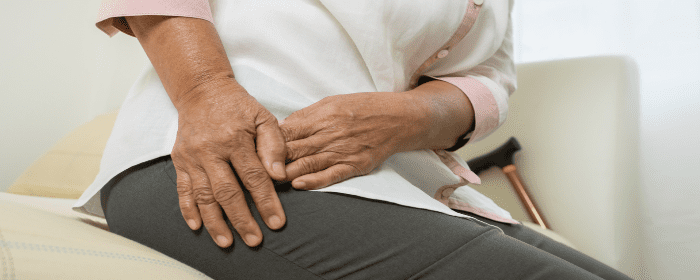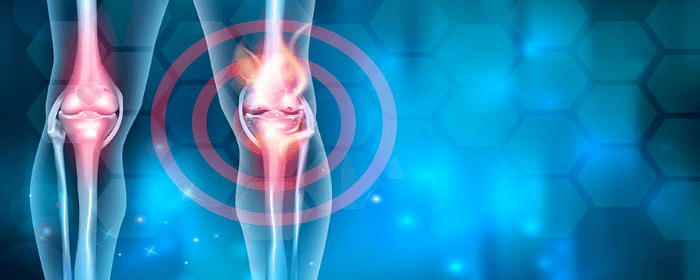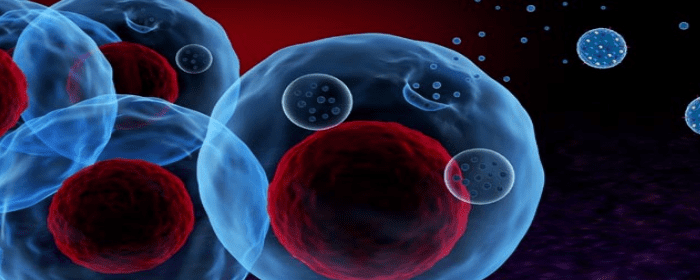
by admin | Apr 2, 2021 | Stem Cell Therapy, Mesenchymal Stem Cells, Osteoarthritis, Stem Cell Research
Osteoarthritis (OA), the most common form of arthritis, affects over 32 million people in the U.S. each year. Characterized by a progressive degeneration of cartilage resulting in pain, stiffness, and swelling in the joints, and most frequently occurring in the hands, hips, and knees, OA has no pharmacological, biological, or surgical treatment to prevent progression of the condition. The authors of this case report focus specifically on potential treatment options for OA of the knee.
With the emergence of stem cell-based therapies for a multitude of health conditions, stem cells, and specifically mesenchymal stem cells (MSCs), have demonstrated immunosuppressive activities that could prove beneficial in supporting the regeneration of cartilage tissue in and around joints in the body.
Research has demonstrated that MSCs are effective in differentiating into essential connective tissues like fat, cartilage, and bone; MSCs have also demonstrated immunomodulatory and anti-inflammatory effects, the ability to self-renew, and plasticity, making MSCs a potentially powerful treatment of OA in the knee (and other parts of the body).
This specific case study details cartilage regeneration in the knee of a 47-year-old woman diagnosed with OA when treated with bone marrow-derived MSC cells. For the course of this treatment, autologous MSCs were collected from bone marrow harvested from the iliac crest. After processing and preparing the MSCs, the sample was confirmed to be free of microbial contamination and was prepared and transplanted into the patient’s knee joint.
Periodic follow-ups with the patient revealed no local or systemic adverse events associated with the MSC transplant procedure. The authors of this case report found that the patient’s functional status of her knee, the number of stairs she could climb, reported pain on a visual analog scale, and walking distance all improved in the two months following the MSC transplant procedure.
Additionally, twelve months after the transplant, the patient demonstrated a positive change in WOMAC (3 to 2), a continued increase in the number of stairs climbed (5 increasing to 50), and visual analog (80 mm to 11 mm). The patient also demonstrated improved gelling (or the amount of time it takes for synovial fluid to thicken as a result of rest) in the knee from 8 minutes to 30 minutes; knee flexion also increased 20° (100° to 120°). Periodic MRIs taken after the transplant procedure demonstrated an extension of the repaired tissue over the subchondral bone.
Mehrabani, et al. conclude that MSC transplantation for treating OA in the knee appears to be a simple, safe, effective, and reliable treatment option that has demonstrated pain relief, improved quality of life, and significantly improved quality of cartilage without hospitalization, pharmaceuticals, or surgery.
Source: (n.d.). The Healing Effect of Bone Marrow-Derived Stem Cells … – NCBI – NIH.; from https://www.ncbi.nlm.nih.gov/pmc/articles/PMC5003953/

by admin | Mar 12, 2021 | Stem Cell Therapy, Mesenchymal Stem Cells, Osteoarthritis
Affecting over 52 million people, or nearly 25% of the adult patients, osteoarthritis (OA) continues to be the leading cause of disability for people in the United States. Occurring as a result of the protective cartilage, or articular cartilage, that cushions the ends of the bones breaking down, OA can occur in any joint, but most often causes pain, stiffness, and swelling in the hands, feet, knees, hips, and lower back[1][2].
To date, current conventional treatments employing pharmacological treatments have been developed to temporarily address the symptoms (i.e.: relieve pain, stiffness, and swelling) of OA, but have proven ineffective in preventing the onset, progression, or long-term symptoms of the condition. While there are a number of reasons conventional OA therapies have demonstrated themselves to be ineffective, the primary reason is that they do not regenerate the cartilage required to prevent the progressive degenerative process associated with OA.
However, recent studies exploring mesenchymal stem cell-based therapy for OA have demonstrated several potential benefits, including regenerating lost cartilage, slowing cartilage degeneration, pain relief, and improved patient mobility.
Currently, there have been a number of advancements in using cellular-based therapy for OA, including techniques such as autologous chondrocyte implantation (ACI) and treatment with embryonic stem cells (ESCs) and induced pluripotent stem cells (iPSCs). While all of these treatments have shown promise in the regeneration of cartilage, each has its own issues which limit its effectiveness and/or availability.
Of the cellular based therapies being evaluated, none demonstrate as much promise, with so few drawbacks, as treatment of OA-related cartridge degeneration with mesenchymal stem cells (MSCs). Sourced from a variety of tissue, including adipose, bone marrow, and synovium, MSC have demonstrated to be progenitor cells with the ability to differentiate into cartilage. Because of this, coupled with the low-level of risk and ease of production, MSCs are considered to be a realistic option, holding the best potential treatment of OA.
While each requires further study, a number of studies, both animal and human, exploring the effectiveness of MSCs gathered from adipose tissue, bone marrow, and synovium have all demonstrated varying degrees of success related to regeneration of cartilage lost as a result of OA progression.
As a result of the benefits resulting from previous studies examining the role of MSCs as a cell-based treatment for treating OA-induced cartilage degeneration and because of the effectiveness and high cost associated with current pharmacological-based treatments, the authors of this review call for further clinical study into more innovative and effective modalities to demonstrate the efficacy, safety, and benefits of MSCs in treating patients with OA.
Article Source: (2016, August 10). Therapeutic potential of mesenchymal stem cell based therapy for …. Retrieved from https://www.ncbi.nlm.nih.gov/pmc/articles/PMC4980326/
[1] “Osteoarthritis – Symptoms and causes ….” 22 Feb. 2020, https://www.mayoclinic.org/diseases-conditions/osteoarthritis/symptoms-causes/syc-20351925.
[2] “Osteoarthritis – Arthritis Foundation.” https://www.arthritis.org/diseases/osteoarthritis.

by admin | Dec 29, 2020 | Stem Cell Therapy, Osteoarthritis, Pain Management, Stem Cell Research
As researchers continue to uncover potential health and medical benefits associated with the regenerative properties of stem cells, there is growing interest in the field of stem cell medicine and specifically for use as an alternative therapeutic treatment of pain.
Of particular recent interest in this area is the differentiation ability of stem cells classified as totipotent, pluripotent, and multipotent. Stem cells that can differentiate into and form cells and build organs are known as totipotent stem cells. Pluripotent stem cells are able to differentiate into various types of cells. Multipotent stem cells can differentiate into several limited forms of cells. Of the three different types, only multipotent stem cells are found as adult cells in the body, including in organs, placenta, and bone marrow.
Recently, stem cell transplantation has been used as an alternative treatment for pain associated with severe osteoarthritis, neuropathic pain, and intractable musculoskeletal pain that does not respond to traditional or conventional medication.
Osteoarthritis
Although stem cells are thought to be a potential treatment approach for repairing and regrowing cartilage required for treating severe osteoarthritis, to date, regeneration of damaged cartilage has proven to produce limited results. One of the significant issues associated with using stem cells to regenerate cartilage is that cartilage contains no blood vessels or nerves, making cartilage regenerations very difficult once it is damaged. Making the process even more difficult, cartilage regeneration can only occur when the entire layer of cartilage and the layer of bone directly below the cartilage is damaged.
As such, therapeutic stem cell treatment possibilities for osteoarthritis include individual or combination treatment(s) of surgical intervention, tissue engineering, and intra-articulation injection of cultured stem cells; of these possible treatment options, intra-articulation injection of cultured cell therapy would be the preferred method as it is the least minimally invasive and most convenient for clinical use.
There have been mixed reviews as to the effectiveness of these treatments and, to date, there have been no reliable and convincing clinical human students with a high level of evidence conducted specifically on the efficacy in functional improvements and cartilage repair surrounding the application of intra-articular stem cell injection therapy. Although some who have had this treatment expressed improvements.
Neuropathic Pain
Stem cells have demonstrated the ability to release neurotrophic factors that enhance the growth and survival potential of neurons, secrete anti-neuroinflammatory cytokines, and provides a cellular source for replacing injured neural cells; this makes the application of stem cells a prime option for regulating and potentially even reversing intractable neuropathic pain.
Studies have confirmed that relieving neuropathic pain is possible through the administering of stem cells, both through intravenous injection and when directly administered to a specific injured site. However, while stem cells do not need to make direct contact with injured cells to produce a neuroprotective effect, stem cells applied directly to an injured site, as opposed to those intravenously injected appeared to better target and relieve neuropathic pain associated with a specific area.
In addition, while a further clinical human study is required, animal models of both diabetic neuropathic pain and spinal cord injury demonstrate that stem cell therapy, and specifically mesenchymal stem cells (MSCs), demonstrated improved blood circulation and nerve conduction velocity, reduced pain, and regeneration of the affected nerve.
Intervertebral Disc Disease
Patients diagnosed with degenerative disc disease who were treated with MSCs injected directly into the nucleus pulposus, or inner core of the vertebral disc demonstrated a reduction in pain and disability comparable to spinal fusion surgery.
Research has yet to identify an adequate, effective dosage of stem cells and further research on specific stem cell type, dosage, safety, and implantation rate is required. As research into the use of stem cell therapy in pain medicine progresses, it is important to see the development of evidence-based standardized methods of treatment.
While still in the early stage of clinical application, the use of stem cells in the treatment of pain appears to be very promising.
Reference: (2019, October 1). Stem cell therapy in pain medicine – PubMed. Retrieved December 11, 2020, from https://pubmed.ncbi.nlm.nih.gov/31569916/

by admin | Nov 7, 2020 | Osteoarthritis, Mesenchymal Stem Cells, Stem Cell Research, Stem Cell Therapy
Osteoarthritis is the most common form of arthritis. In osteoarthritis, the cartilage of the joints breaks down, bone spurs form, the synovial linings become inflamed, and the ligaments around the joint calcify. All of these pathological changes combine to cause joint pain, swelling, and stiffness. The breakdown of the joint also means that it does not function properly. The arthritic joint may “lock up,” “give out,” or simply not be able to move through its normal range of motion. Early in the disease, the pain of osteoarthritis may be brought on by movement. Later, the pain is more or less constant with severe pain flares.
Initially, the treatment for osteoarthritis is pain medications, exercise, braces, and physical therapy. Joint injections may be helpful for 4 to 6 weeks, but recent research suggests that repeated steroid injections may break down cartilage and speed up joint destruction. Unlike treatments for rheumatoid arthritis, there are no disease-modifying treatments for osteoarthritis. The disease tends to get worse over time until surgery is required. Joint replacement surgery is usually the treatment of last resort.
Since osteoarthritis is a degenerative joint disease, a reasonable approach to therapy is to try to rebuild or regenerate the joint tissues. This would not only stop the disease progression of osteoarthritis but perhaps even heal the damaged joint. For this reason, regenerative medicine, also known as stem cell therapy, is drawing the attention of many scientists who are looking for alternative therapeutic treatments for osteoarthritis.
Researchers tested the ability of mesenchymal stem cells to relieve pain and treat the damage of osteoarthritis. More specifically, they used the exosomes that the mesenchymal stem cells produce. Exosomes are tiny packets of substances like RNA and peptides that support tissue growth and repair. Exosomes contain most of the molecules that make mesenchymal stem cells helpful.
The scientists found that giving exosomes from mesenchymal stem cells to animal subjects with experimental osteoarthritis had some remarkable effects. Not only did the stem cell-derived treatment substantially reduce pain in the rats with osteoarthritis, but microscopic and molecular evidence also showed that the exosomes were able to repair cartilage in the affected joints. This is truly impressive when you consider that other treatments for osteoarthritis only reduce symptoms—they do not repair cartilage or stop the progression of the disease.
While this work will need to be replicated in human clinical studies (and that work has already begun), this is an exciting finding for the millions of Americans who struggle with osteoarthritis.
Reference: He, L., He, T., Xing, J. et al. Bone marrow mesenchymal stem cell-derived exosomes protect cartilage damage and relieve knee osteoarthritis pain in a rat model of osteoarthritis. Stem Cell Res Ther 11, 276 (2020). https://doi.org/10.1186/s13287-020-01781-w

by admin | Oct 24, 2020 | Exosomes, Osteoarthritis, Stem Cell Therapy
Osteoarthritis is a disease in which joint cartilage degenerates and the bony edges of the joint rub against each other. The disease causes pain and disability in the affected joint. There is no cure for osteoarthritis, except perhaps for artificial joint replacement surgery. Patients who are not candidates for surgery must get by with pain medications, braces, and physical therapy.
Given that osteoarthritis affects millions of people and there are limited options for long-term treatments other than major surgery, researchers are working very hard to find additional ways to manage this condition. One of the most exciting developments has been in the field of regenerative medicine, also known as stem cell therapy.
Stem cells injected into arthritic knees, for example, may help reduce the patient’s pain, protect cartilage, or even slightly heal the joint damage. Many patients feel relief and see improvements from just one therapy. Some with more advanced conditions may require a more maintenance plan. But today, researchers are now focused on the mesenchymal stem cell secretome.
What is a mesenchymal stem cell secretome? A mesenchymal stem cell secretome is the total of all of the molecules that mesenchymal stem cells secrete or release to support, restore, and regenerate tissue. The molecules released from mesenchymal stem cells, mostly through stem cell exosomes, exert many powerful benefits on joints.
From laboratory experiments in animals, we know the mesenchymal stem cell secretome is anti-apoptotic, which means it protects joint cells from committing programmed cell suicide. The secretome is also anti-fibrotic, and fibrosis can be damaging to joints and make them stiff. The secretome is pro-chondrogenic and pro-angiogenic, which means it helps build cartilage and blood vessels, respectively.
Lastly, the mesenchymal stem cell secretome modulates the immune system. While rheumatoid arthritis is considered the major inflammatory joint disease, inflammation also takes place in osteoarthritis. So, the mesenchymal stem cell secretome can modulate the immune system and reduce joint inflammation.
The main way that patients can reap the potential benefit of the mesenchymal stem cell secretome is through exosomes. Exosomes are small particles that contain most of the substances released in the secretome. Exosome treatment does not require stem cell infusions, and many, many more exosomes can be administered during a treatment session than stem cells, mainly because they are physically much smaller.
The concept of mesenchymal stem cell secretome is rather new, but it is a powerful concept in the treatment of osteoarthritis. As more human clinical studies are done, we should be able to unlock the power of the secretome for patients with osteoarthritis.
Reference: Mancuso P, Raman S, Glynn A, Barry F, Murphy JM. Mesenchymal Stem Cell Therapy for Osteoarthritis: The Critical Role of the Cell Secretome. Front Bioeng Biotechnol. 2019;7:9. Published 2019 Jan 29. doi:10.3389/fbioe.2019.00009

by admin | Jul 5, 2020 | Exosomes, Osteoarthritis, Stem Cell Therapy
Odds are, you or someone you know has osteoarthritis—it is that common. Osteoarthritis is a chronic inflammation and destruction of one or more joints. Osteoarthritis is the kind of arthritis most people think of when they think of “arthritis.” The disease usually causes joint pain, stiffness, and limited joint motion. Common sites of osteoarthritis are the hands, knees, feet, spine, and hips.
Unlike rheumatoid arthritis, there are few good treatments for osteoarthritis. Most people with advanced disease must take analgesics (painkillers) each day to dull the pain. Unfortunately, each painkiller comes with its own problems. Aspirin increases the risk of bleeding. NSAIDs like ibuprofen wreak havoc on the gastrointestinal system and affect the kidneys. Chronic acetaminophen can be harmful to the liver. Opioids come with the risk of dependence and addiction. The only definitive treatment for osteoarthritis is surgery, which is expensive and usually requires a long recovery period.
Mesenchymal stem cells, also known as stromal cells, have shown remarkable promise in the treatment of osteoarthritis. For example, mesenchymal stem cells taken from bone marrow or fat tissue (adipose) that are then injected into joints can protect the joint from degeneration and slow the progression of osteoarthritis. However, there are some limitations with stem cell treatment. One issue is that only so many cells can be injected in a space at once. For these reasons, scientists have pivoted some of their focus from stem cells to the tiny packets of information stem cells release called exosomes.
Exosomes contain millions of beneficial molecules including small proteins, cytokines, RNA, microRNA, and DNA. One stem cell can release thousands of exosomes. Since the exosomes are so small, many more exosomes can be collected and injected than stem cells themselves.
Researchers recently showed that exosomes collected from mesenchymal stem cells were able to provide the same benefits against osteoarthritis in mice as bone marrow stem cells did themselves. Stem cells slowed down the clinical signs of arthritis in mice just as whole stem cells did. Exosomes also protected cartilage and other joint structures from destruction.
This research demonstrates the developing science to use exosomes to treat osteoarthritis instead of the stem cells themselves. This gives doctors (and patients) considerably more flexibility in how they approach treatment. Exosomes tend to find their way to sites of disease, meaning they may be able to be injected into a vein instead of injected in the diseased joint. In addition, patients may be able to receive a higher “dose” of exosomes when simply purified exosomes are injected. This exciting research will need to be extended to humans, but clinical trials are in the planning phase.
Reference: Cosenza, S., Ruiz, M., Toupet, K. et al. Mesenchymal stem cells derived exosomes and microparticles protect cartilage and bone from degradation in osteoarthritis. Sci Rep 7, 16214 (2017).







 St. Petersburg, Florida
St. Petersburg, Florida
